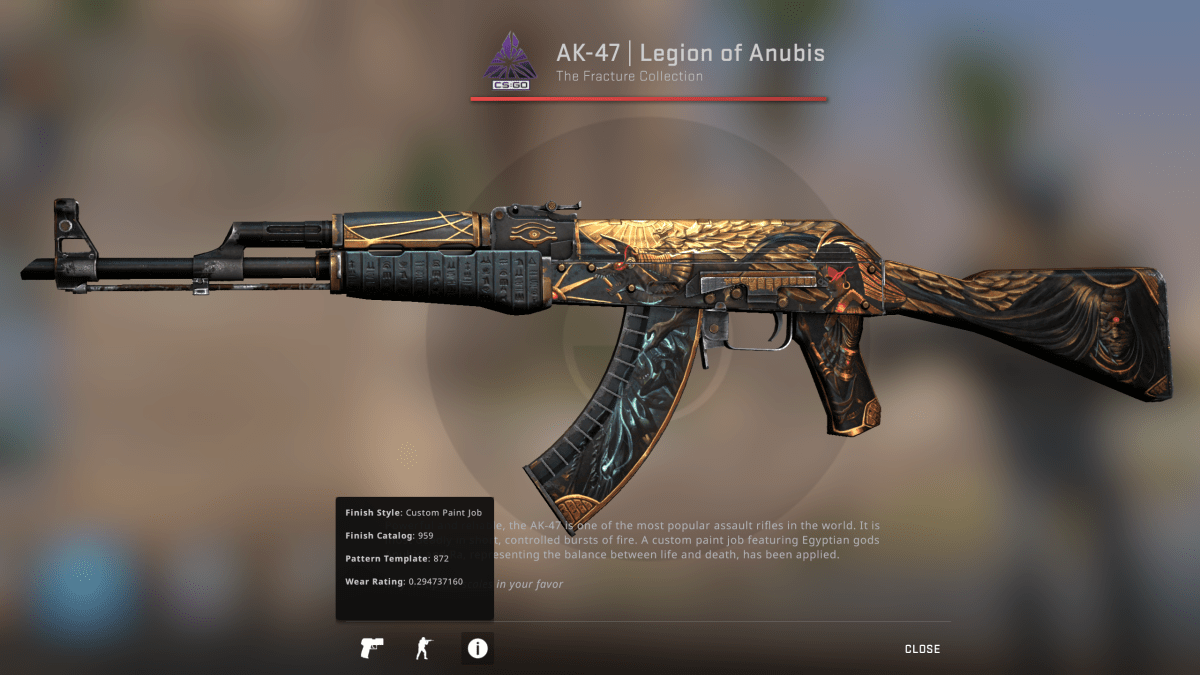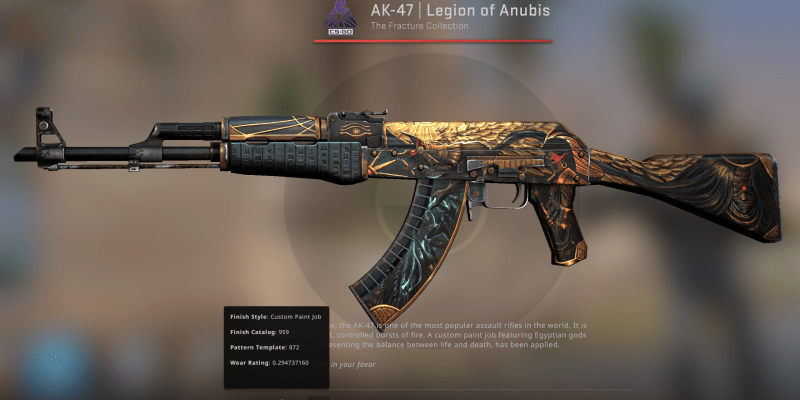If you’re like me and are very excited to dig into Counter-Strike 2, you may have also started playing CSGO again. One thing I noticed was just how much skins have gone up in value; almost all my skins and cases had doubled in value. I started to look more closely into CSGO skins and went down a bit of a rabbit hole. I came across YouTubers and Tiktokers constantly mentioning the float of the skins they were unboxing from opening crates. If you have some CSGO skins or plan to unbox some, you should read on so that you don’t undervalue them and under what float means!
Explaining What Float Can Mean for Skins in CSGO
Skins in CSGO have a whole lot more to them than it seems on just the surface. If you’ve had any experience with them, you’ll know about the various conditions that the skins can be in such as Battle-Scarred, Well-Worn, Field-Tested, Minimal Wear, and Factory New.
Each of these conditions for the skin exhibits a different level of wear and tear on the skins. Battle-Scarred sees skins so badly scratched up that you can barely recognize the pattern or finish on the skin, while Factory New skins look beautiful, bright, and complete on a weapon. Not all skins are the same though, despite the condition that they are listed in.
You see, all skins in CSGO actually have a numerical range that they fall into, called a float, and this range can be quite wide for the different conditions. For example, a Field-Tested AWP Asiimov can range from a low float for the Field-Tested category at 0.195, which looks more like it’s in Minimal Wear condition, all the way up to something like a 0.372, which makes it look more like Well-Worn.
This actually plays a big role in the pricing of skins, especially when you get into the more expensive skins. The lower the float, the better your skins look, which typically results in a higher valuation for your skins. It’s unfortunately not a filtering option that’s available on the Steam Marketplace though, so if you want to realize the higher value of these low-float CSGO skins, you’ll need to use a third-party marketplace to list them.
However, you can check your skins for their float value in-game by simply going into your inventory in CSGO and clicking “View Item” on the skin you want to check. This will bring up the skin for you to inspect. If you then hover your mouse over the little “i” icon down the bottom of your screen, it will display extra information including the Wear Rating, which is what most people refer to as the float of the skin.
You can even view this information for skins that you’re looking to buy off the Steam Marketplace to make sure you’re getting a good-looking skin before you buy it. Just click on the little dropdown arrow on the icon of the skin you want to buy and select the “Inspect in Game” option to be able to view it inside CSGO, and then you can use the method mentioned above to check the float.
Here is the range you can expect for most items:
- 0 – 0.07 – Factory New
- 0.07 – 0.15 – Minimal Wear
- 0.15 – 0.38 – Field-Tested
- 0.38 – 0.45 – Well-Worn
- 0.45 – 1 – Battle-Scarred
Do note that these can vary, as some skins top out at a lower value and can even reach a much lower decimal value for Factory New. This is reflected in certain skins like the AWP Fade that can be found in float ranges like 0.008, and the results do show in-game with the skins looking their absolute brightest, shiniest, and newest.

Now that you know all about what float means for skins in CSGO, you’re much better armed with the knowledge of which skins are better and why, even within the same ranges of skin wear. You can now value your skins properly and look for the best possible versions of the skins you want to buy from the marketplace by checking them out in-game and looking at their floats first.
So, what are you waiting for? Go get that cheaper Field-Tested Asiimov that looks like it’s a much nicer and more expensive Minimal Wear and enjoy!

